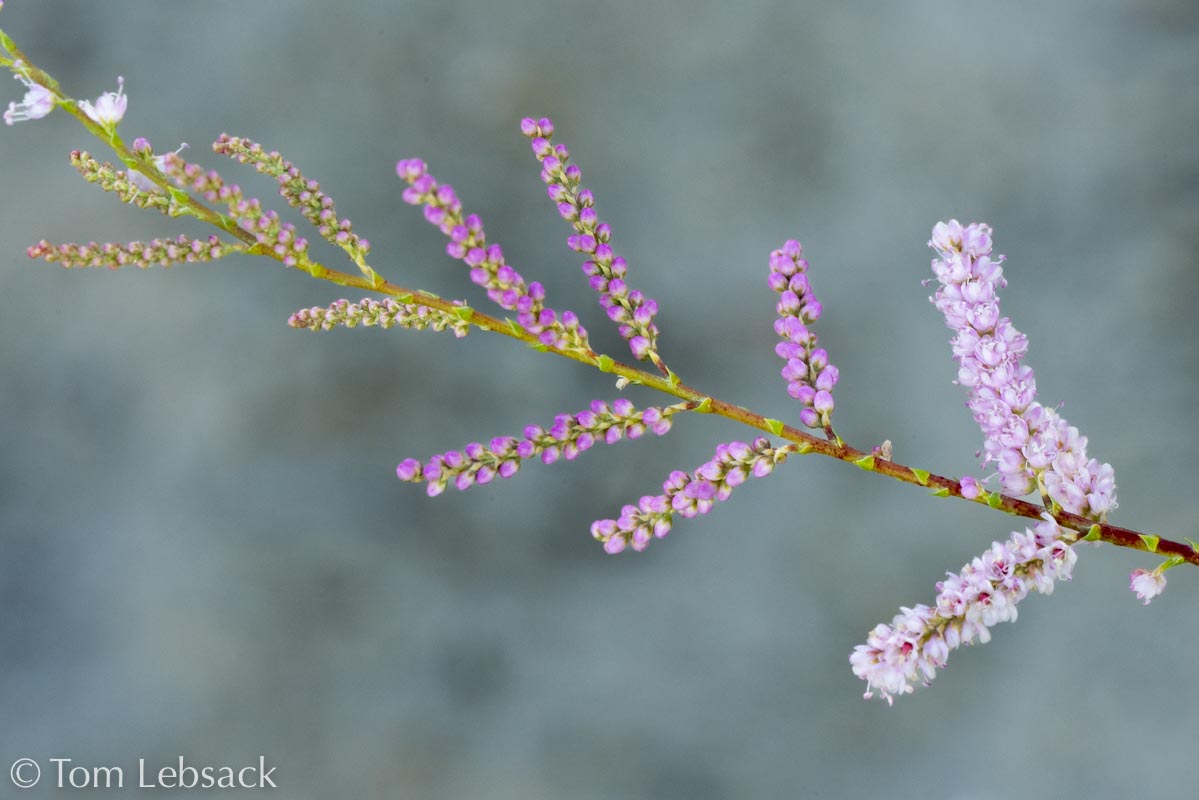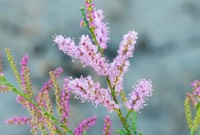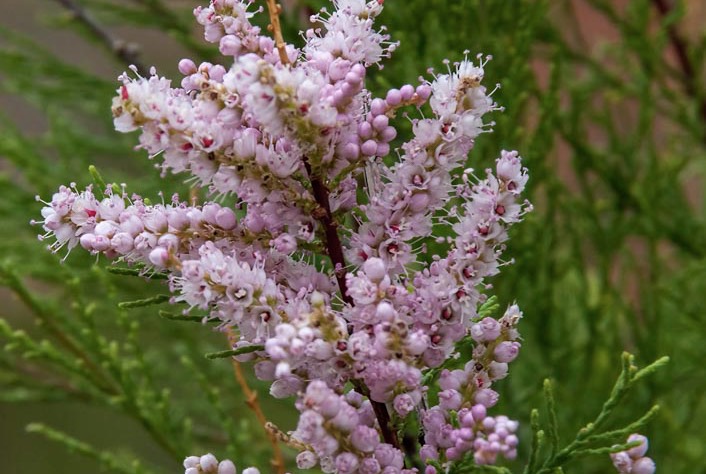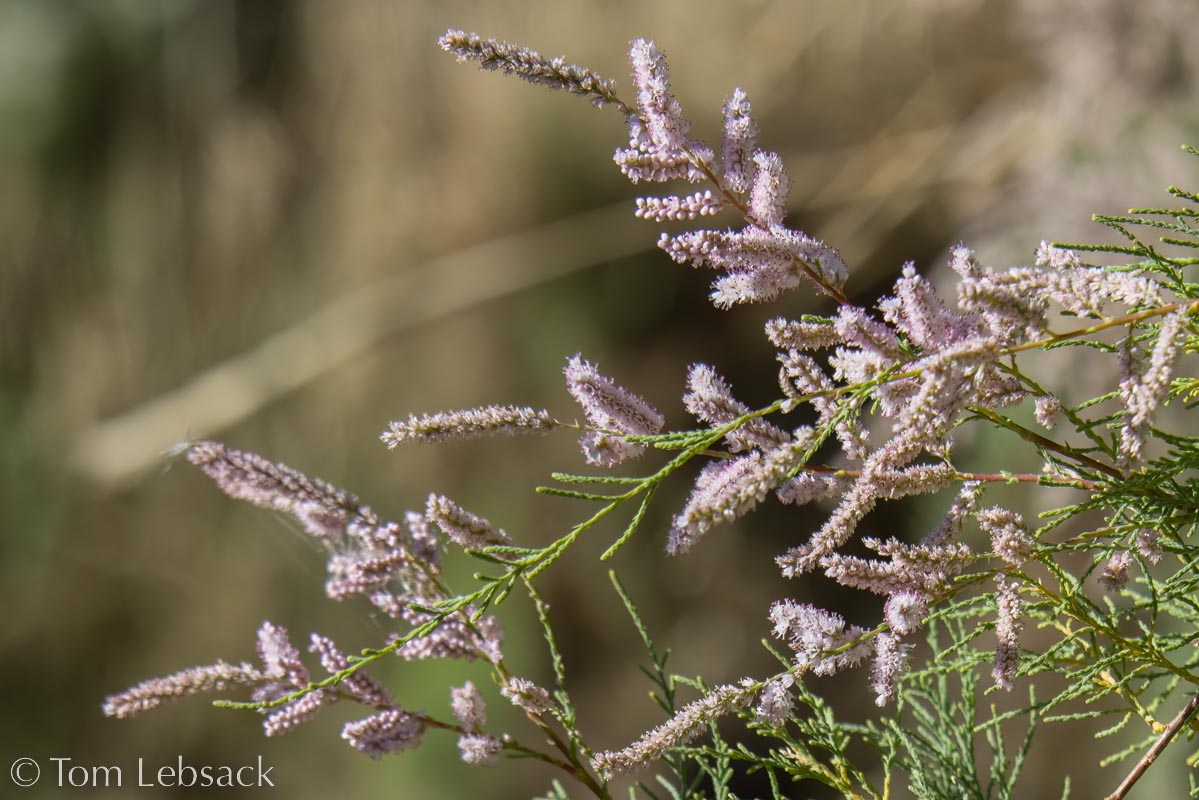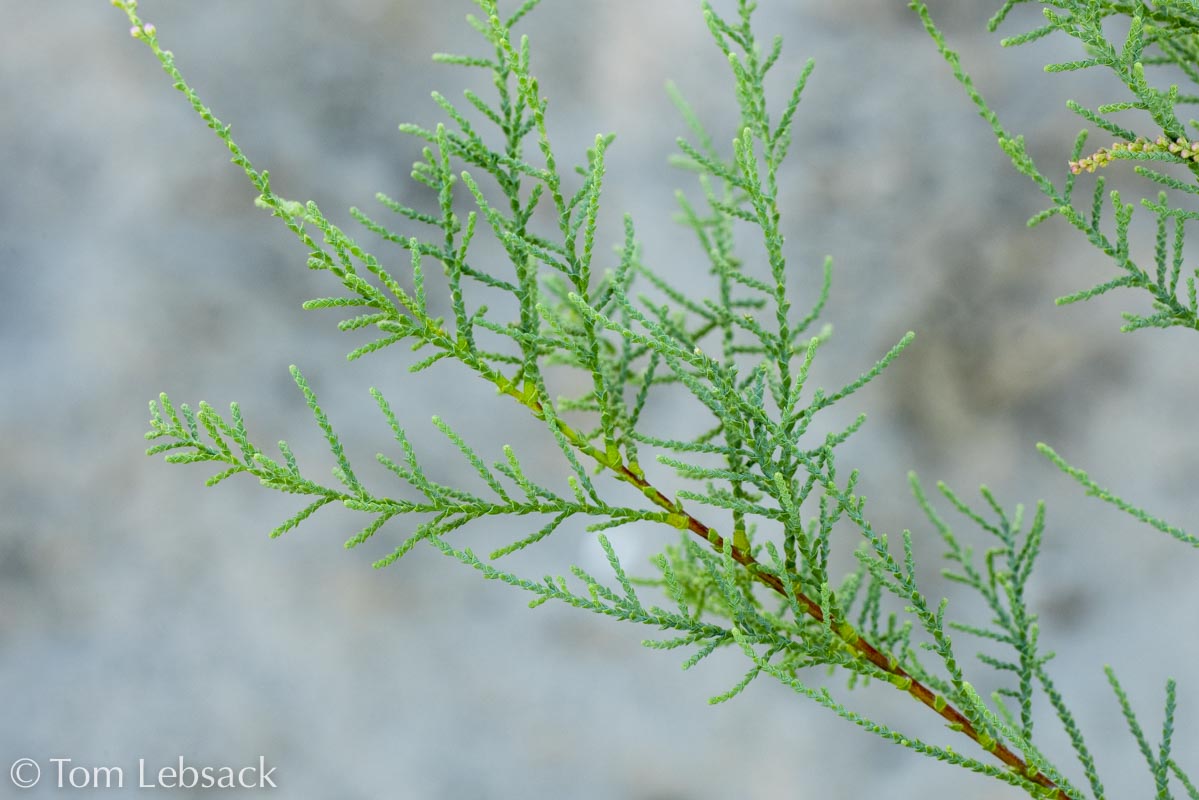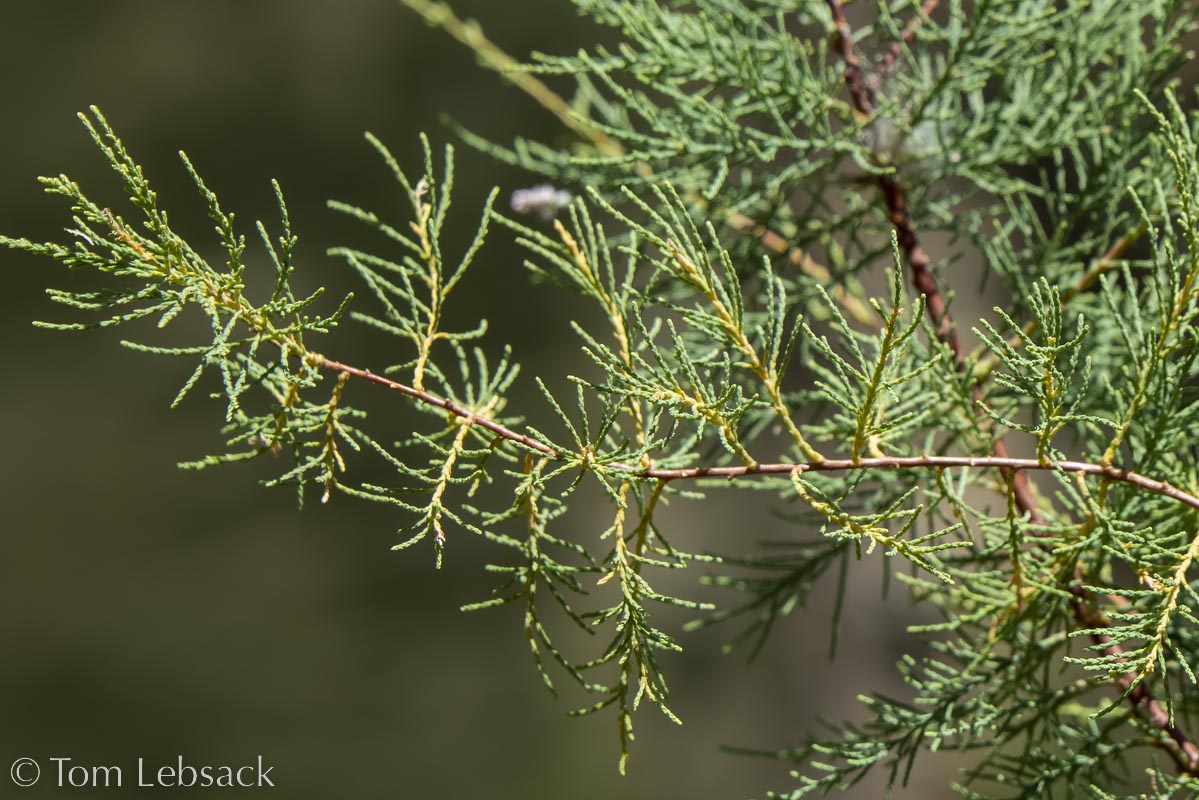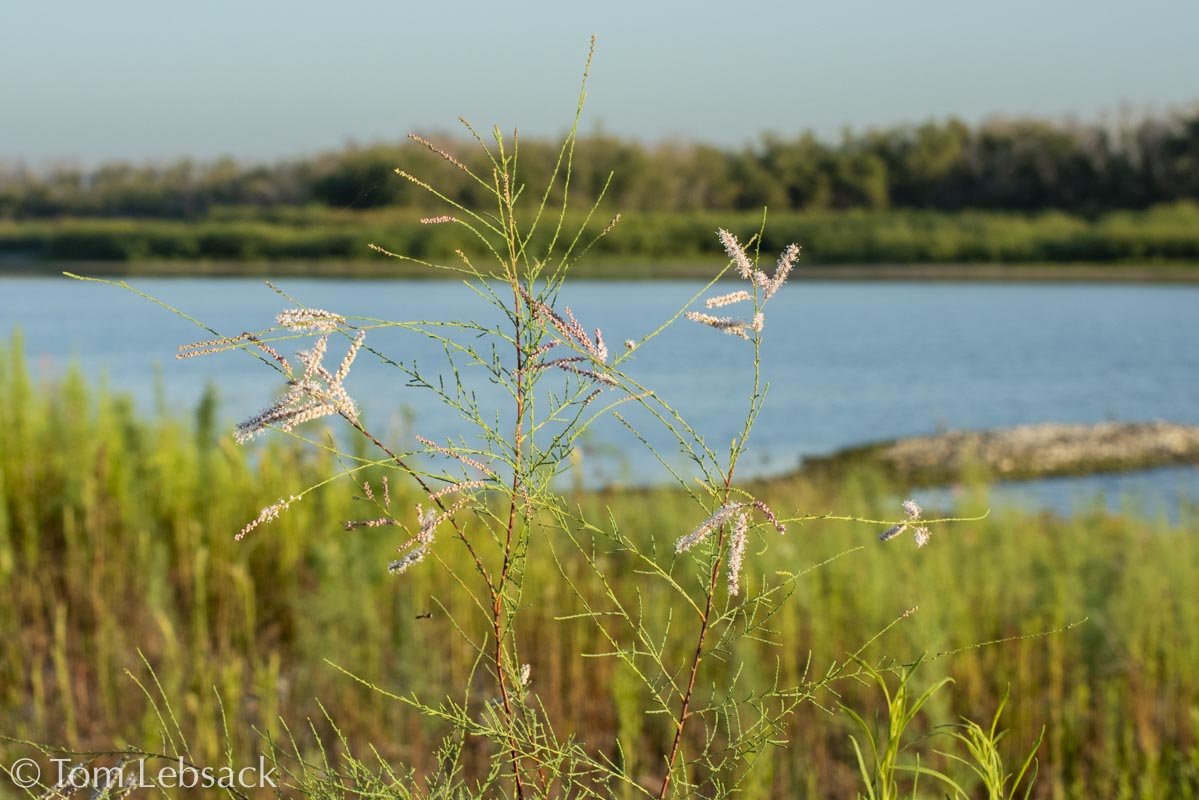Texas Wildbuds
Tamarix ramosissima
(Salt Cedar)
| Scientific Name | Tamarix ramosissima | USDA PLANTS Symbol | TARA |
| Common Name | Salt Cedar | ITIS Taxonomic Serial No. | 22310 |
| Family | Tamaricaceae (Tamarix) | Texas Invasives Reference | Click Here |
| Description | Habitat: Sandy soils along streams, salt flats and waste areas. Introduced from Eurasia. Plant: Spreading deciduous shrubs or small trees, 5 to 20 feet tall, with numerous slender, spreading branches; reddish-brown bark. Leaves: Small, scale-like blades, alternate, lanceolate, 1/8-inch long or less, sessile. Inflorescence: Small, pale pink to white flowers arranged in spike-like racemes 3/4 to 2-3/4 inches long; flowers with 5 very small petals about 1/16-inch long or less and 5 sepals, wuth irregular edges. Bloom Period: Early spring to late fall. References: Texas Invasives, "Manual of the Vascular Plants of Texas" by Correll and Johnston and Flora of North America. Note: Some authorities consider T. ramosissimus to be synomynous with T chinensis. From the literature, one obvious difference is that the bark of the former is reddish-brown and the latter, brown to blackish-purple. |
BONAP Distribution Map N/A See USDA Plants |
Texas Status: Introduced INVASIVE |
Banner photo of Castilleja indivisa and Lupinus ssp. taken along FM 1323 north of Johnson City, Blanco County
© Tom Lebsack 2025
Every attempt is made to provide accurate, up-to-date, and relevant information, but the completeness or accuracy of any information presented on this website cannot be guaranteed. I use authoritative references to insure high standards of accuracy and review and update the information frequently.
